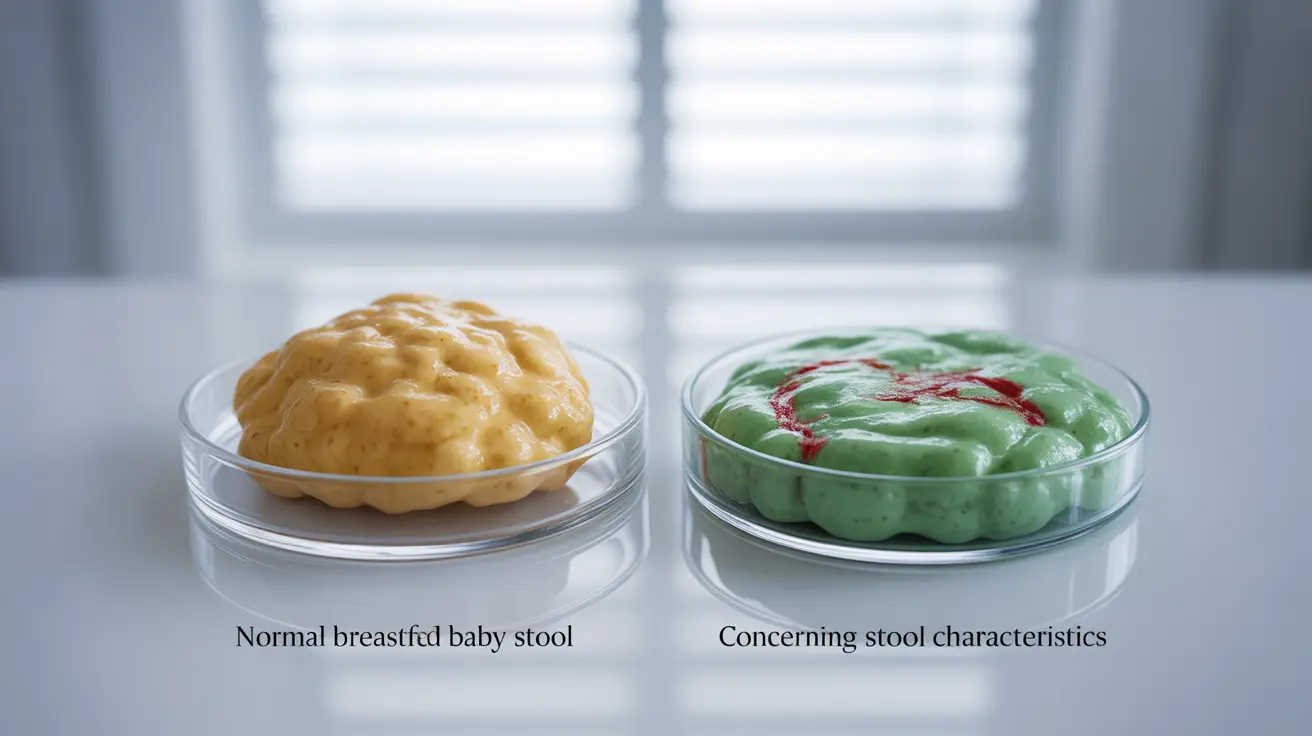As a new parent, checking your baby's diapers is a crucial part of monitoring their health and development. One common concern many parents face is noticing what appears to be seedy undigested milk in their baby's stool. Understanding what's normal and what isn't can help ease anxiety and ensure your baby's digestive system is functioning properly.
This comprehensive guide will help you understand the characteristics of normal baby stool, what causes its distinctive appearance, and when you should be concerned about changes in your baby's bowel movements.
Normal Characteristics of Baby Stool
Baby stool can vary significantly in appearance, especially between breastfed and formula-fed infants. For breastfed babies, the stool typically appears loose and seedy, with a mustard-yellow color. These small, seed-like particles are actually undigested milk fat and are completely normal.
Formula-fed babies tend to have firmer stools that are tan to brown in color, with a consistency similar to peanut butter. While they may also have some milk particles, the seedy appearance is generally less pronounced than in breastfed babies.
Understanding Seedy Stools in Breastfed Babies
The distinctive seedy appearance in breastfed baby stool occurs because breast milk naturally separates during digestion. The fat globules in breast milk create small, whitish or yellowish curds that appear as seeds in the stool. This is a sign that your baby is properly digesting breast milk and absorbing necessary nutrients.
Normal vs. Concerning Appearances
Normal seedy stools should be:
- Soft and loose in consistency
- Yellow to golden in color
- Accompanied by a mild, slightly sweet odor
- Containing small, seed-like particles
- Passed easily without discomfort
Signs of Digestive Issues
While seedy stools are typically normal, certain changes may indicate digestive problems. Watch for:
- Green, mucousy, or bloody stools
- Extremely watery stools
- Hard, pellet-like stools
- Significant changes in frequency
- Signs of pain during bowel movements
Impact of Feeding Type on Stool Appearance
The type of milk your baby receives directly affects their stool's appearance and consistency. Breast milk contains natural enzymes and antibodies that influence how it's digested, while formula's processed nature results in different stool characteristics. Understanding these differences helps you better gauge what's normal for your baby.
When to Contact Your Pediatrician
While seedy stools are usually normal, certain symptoms warrant medical attention:
- Consistently green or white stools
- Black, tarry stools (after the meconium period)
- Blood in the stool
- Signs of severe constipation or diarrhea
- Excessive crying during bowel movements
- Significant changes in feeding patterns
Frequently Asked Questions
What does seedy undigested milk in baby stool look like and is it normal?
Seedy undigested milk appears as small, whitish or yellowish particles throughout the stool, similar to tiny seeds or grains. This is completely normal, especially in breastfed babies, and indicates proper milk digestion.
Why does breastfed baby poop often have a yellow, seedy texture with soft curds?
This texture occurs because breast milk naturally separates during digestion, with fat particles forming small, seed-like curds. The yellow color comes from bile pigments, while the soft consistency results from the easily digestible nature of breast milk.
How can I tell the difference between normal seedy stool and signs of digestive problems in my baby?
Normal seedy stools are yellow to golden, soft, and passed easily. Signs of digestive problems include green or bloody stools, excessive watery or hard stools, significant changes in frequency, and signs of discomfort during bowel movements.
What changes in baby poop should prompt me to contact a pediatrician?
Contact your pediatrician if you notice blood in the stool, black or white colored stools, severe constipation or diarrhea, signs of pain during bowel movements, or significant changes in feeding patterns or stool frequency.
How does the type of feeding affect my baby's poop color and texture?
Breastfed babies typically have looser, yellower stools with more visible seed-like particles. Formula-fed babies tend to have firmer, tan to brown stools with a peanut butter-like consistency and fewer visible milk particles.




